Speaker
Description
The bismuth silicate (Bi$_2$SiO$_5$) glass possesses some exceptional dielectric properties, including a high dielectric constant that is significantly larger compared to most other glasses. To gain insight into this behavior, we conducted a comprehensive analysis of the glass structure using a combination of high-energy X-ray scattering, X-ray absorption spectroscopy, and RMC modeling with a further investigation of the atomic-scale order by persistence homology (PH) analysis. Furthermore, based on Si NMR data, constraints were established for the SiO4 tetrahedra and their connectivity. The analysis revealed that the majority (approximately 90%) of the SiO$_4$ tetrahedra exist as $Q^2$ species, forming one-dimensional chains within the structure.
However, modeling the glass structure poses a challenge due to the peculiar electronic structure of Bi. In comparable crystalline phases, Bi is present as either a BiO$_5$ or BiO$_6$ polyhedron, in which all the oxygen atoms are constrained to one hemisphere of the coordination shell, while the other side is occupied by an electron lone pair. This arrangement results in a substantial atomic-level polarizability, which contributes to the large dielectric constant observed in the crystal phase [1,2]. Note that the Bi$_2$SiO$_5$ crystal is a metastable compound that can only be found in a nonequilibrium phase diagram. Consequently, samples of Bi$_2$SiO$_5$ are fabricated through the crystallization of Bi-Si-O glasses.
Remarkably, our analysis demonstrated that similar features can be identified within the glass structure as well. The experimental data is compatible with a structure composed of BiO$_x$-polyhedra-rich regions dispersed throughout a network of disordered SiO4 tetrahedral chains. The details will be presented in this presentation. Overall, our findings shed light on the structure of the Bi$_2$SiO$_5$ glass and its correlation with its remarkable physical properties, particularly the remarkably high dielectric constant.
References
[1] H. Taniguchi et al., Angewandte Chemie Int. Ed. 52 8088-8092 (2013).
[2] H. Taniguchi et al., Phys. Rev. Mat. 2 04560 (2018).

